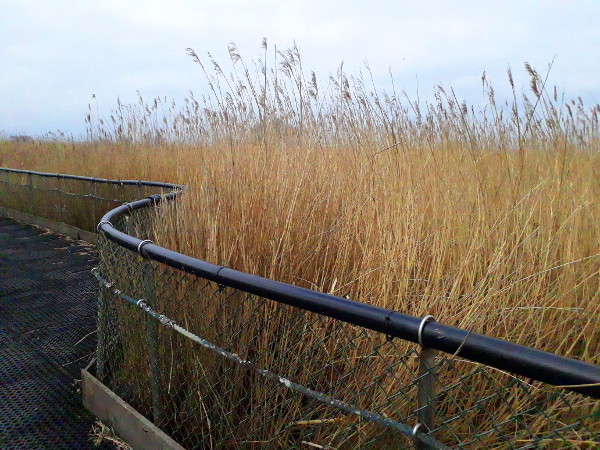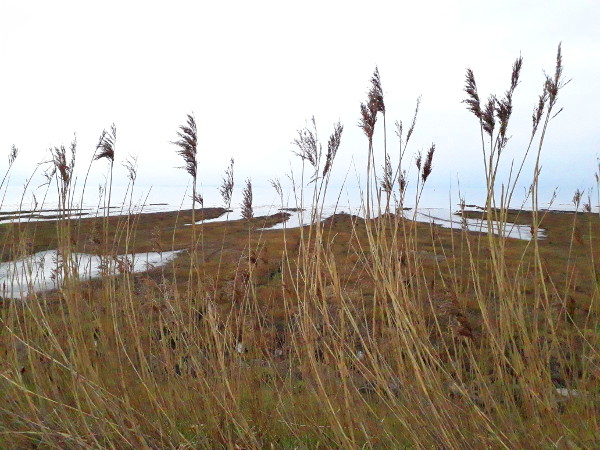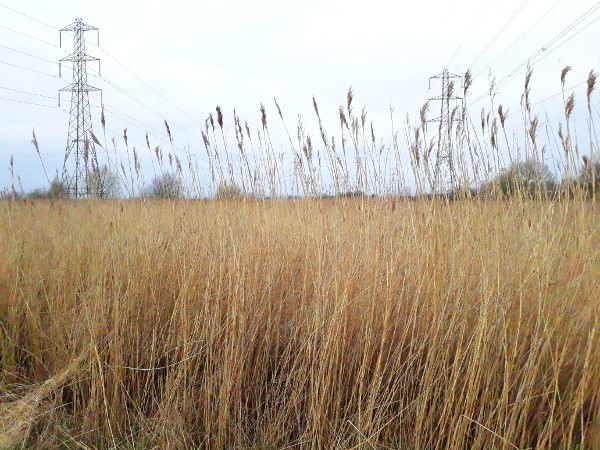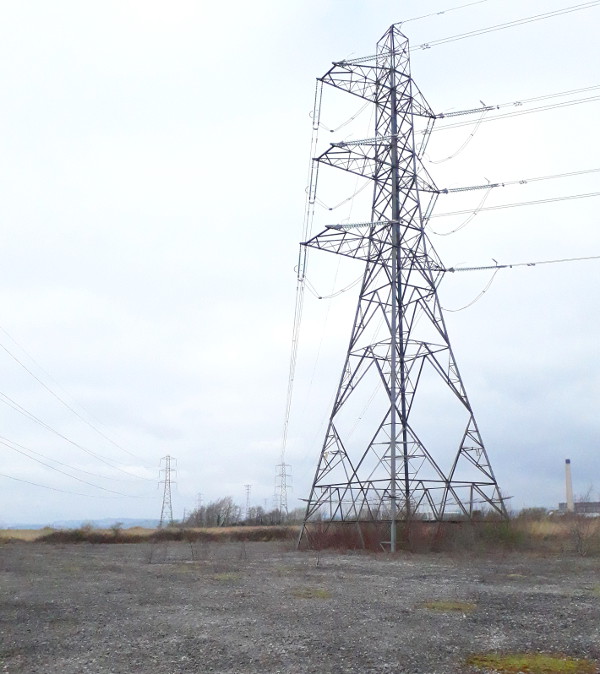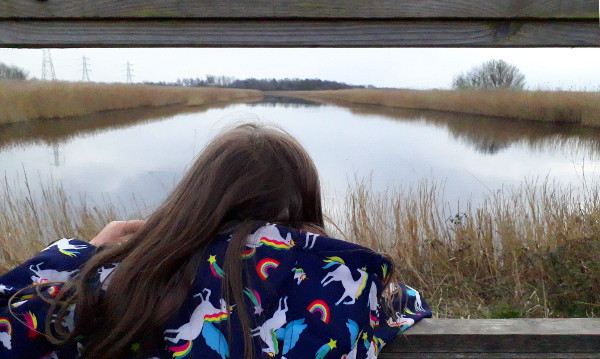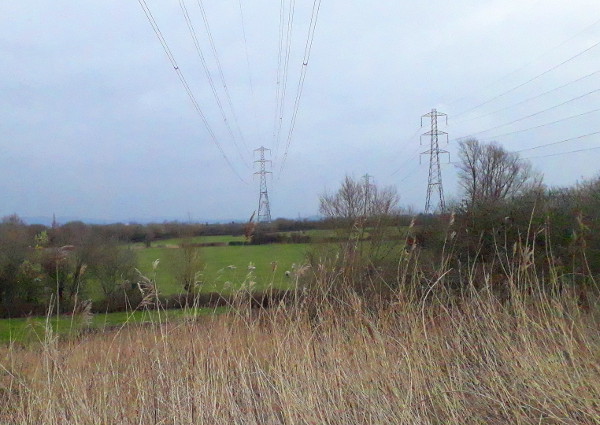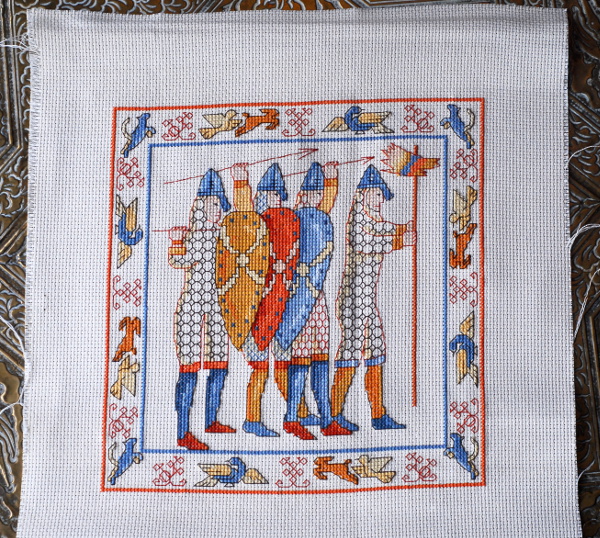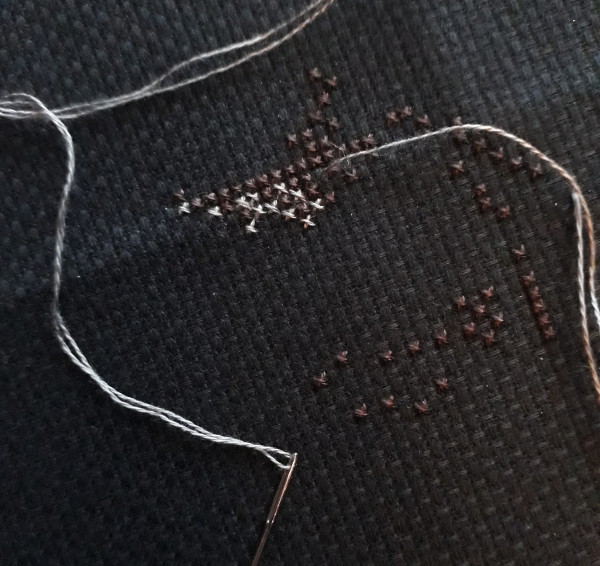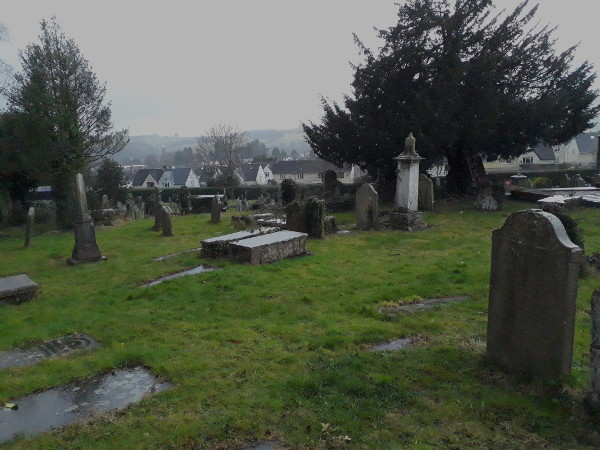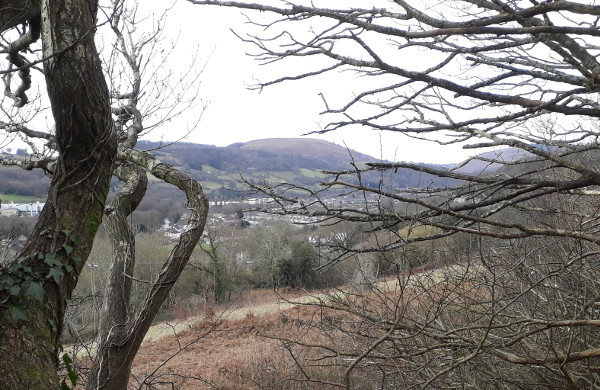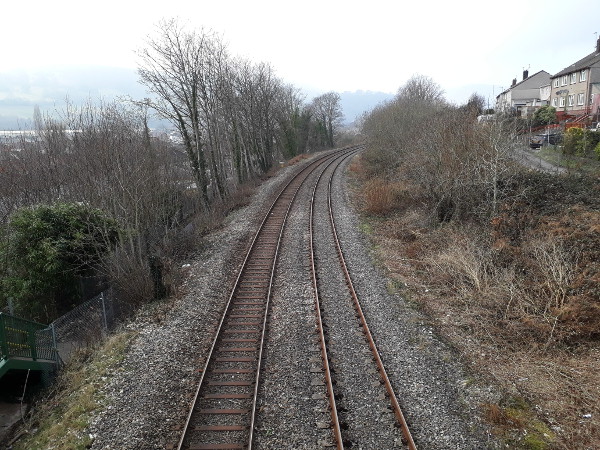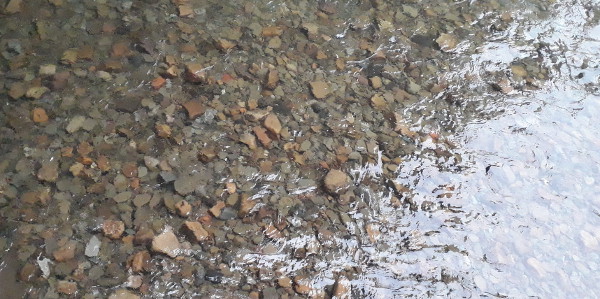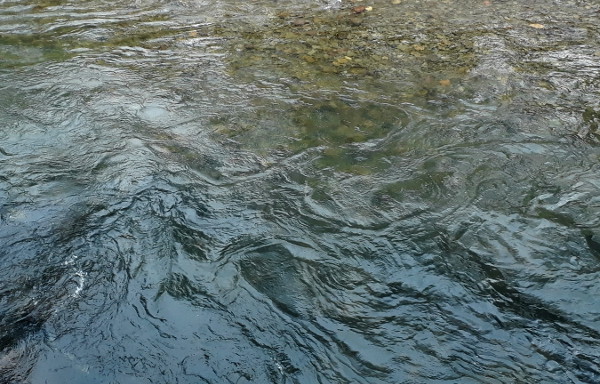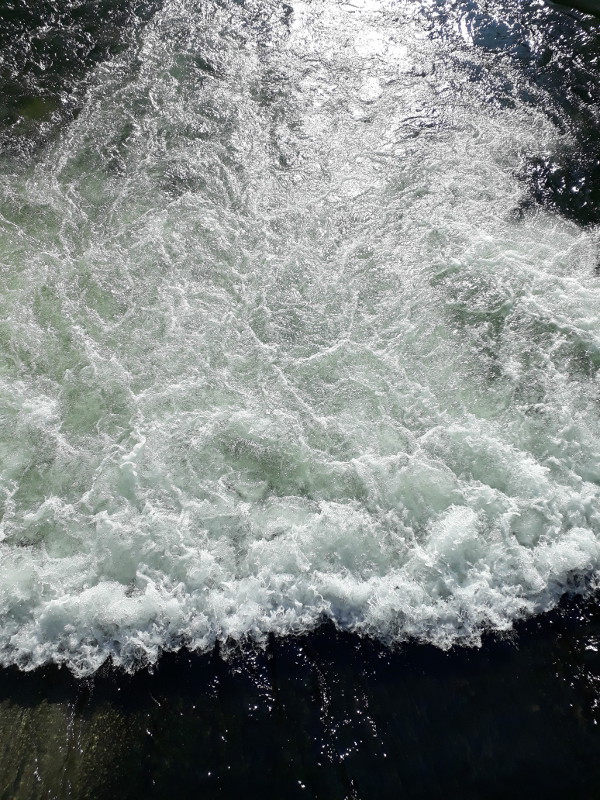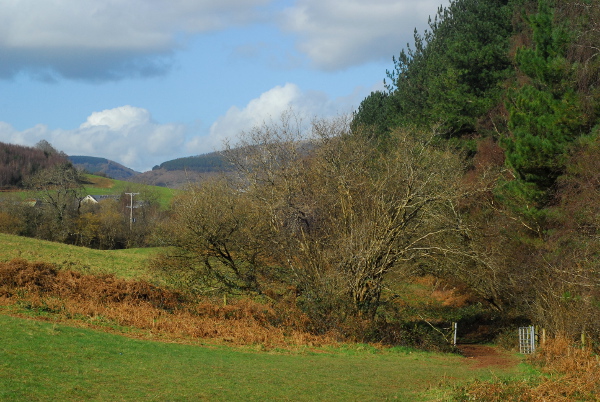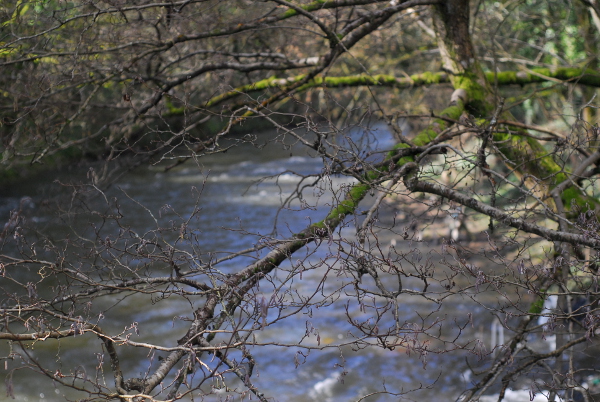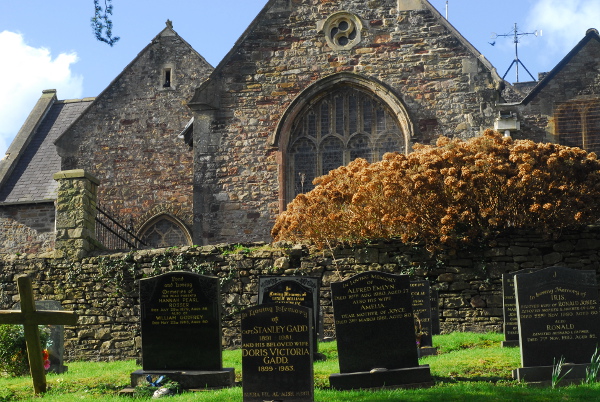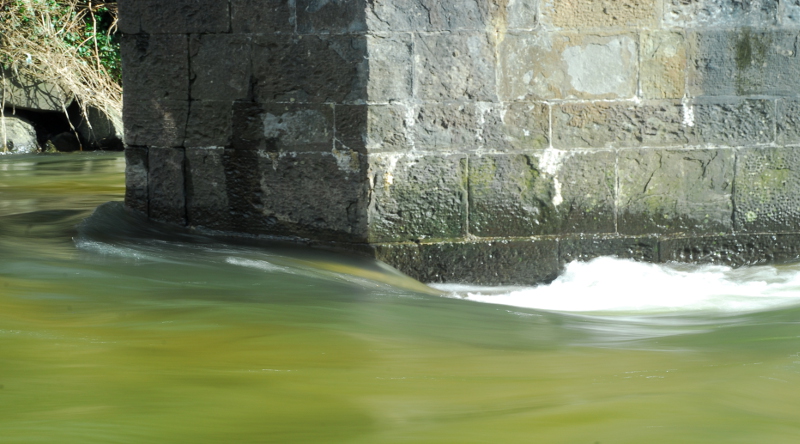Onwards and upwards
Or, a trip up a mountain
As I said last week, things are slowly opening up here once more. Last week we could travel locally; from today, in Wales we can travel for leisure anywhere in the country so long as we don’t enter or leave it. I was somewhat tempted to spend the whole day driving to Porthmadog and then back again, just because I could, even though it would be an entirely pointless and childish thing to do.
It dawned bright and sunny, and The Child Who Likes Fairies immediately said: “can we go to the beach?” Naturally, I expected the beach would be packed, as would all of the standard inland tourist honeypots: Cwmcarn Forest, the Sugar Loaf, Pen y Fan, the Blorenge. “The Welsh Government are asking people to avoid flooding beauty spots,” said the news on the radio. I looked at a map, and picked a mountain overlooking Cwmbrân instead.
Mynydd Twyn-Glas is the mountain between Cwmbrân in the Eastern Valley and Crumlin in the Western Valley. It’s really just a slight rise in a broad-shouldered plateau, named Mynydd Maen on its south and Mynydd Llwyd on its north; and the whole, being common land, is also known as Mynydd Maen Common. The southern flank drops off sharply into steep-sided ravines thickly and densely covered with plantation conifers, the southernmost being the aforementioned Cwmcarn Forest. Being traditionally common land it’s now open access land. Despite this, I was surprised just how quiet it was: birds, bees, a handful of off-road bikers and another handful of dog walkers. We wandered across the open moorland, just above the edge of the forest, occasionally shouting into the trees and hearing the echo back from the other side of the ravine.

A line of pylons strides across the moor, linking the upper valleys with the power stations of Newport. The wind whistled through them with an eerie note, singing the minor-key chord of a distant angelic choir.
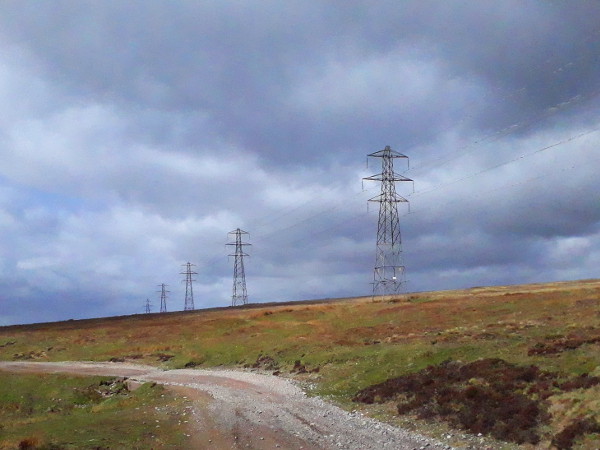
We saw a distant, intriguing stone slab, looking for all the world like a gravestone in the middle of the moor. Naturally, we headed straight for it.
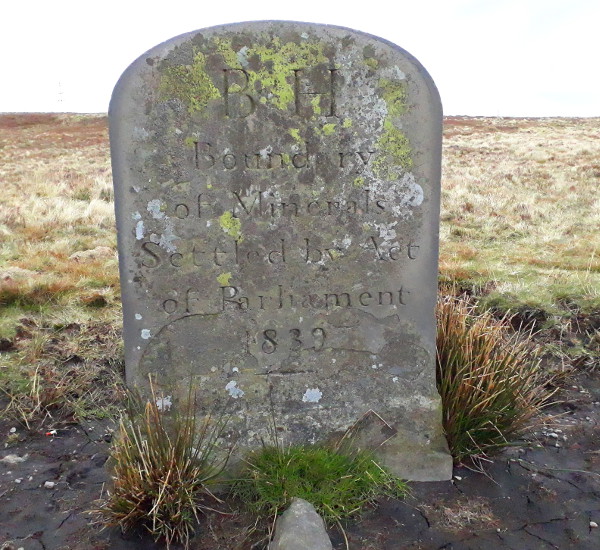
B H
Boundary of Minerals
Settled by Act of Parliament
1839
Apparently there a few of these stones scattered at intervals through the area: the Act in question is 2 & 3 Vict. c. 38, “Sir Benjamin Hall’s, Capel Leigh’s and others’ estates: exchange of mines and land”. Sir Benjamin Hall MP is the “B H” of the stone: MP for Marylebone for over 20 years, he played a significant role in improving British public infrastructure, and is also possibly the man who Big Ben was named after. However, despite his important role in the history of London, his background was always in South Wales, his maternal grandfather (and source of his wealth) being the Merthyr ironmaster Richard Crawshay. The other side of the stone, incidentally, has “C H L” for Capel H Leigh.
Closer to the summit of the mountain, we found another stone. This, however, is much simpler.
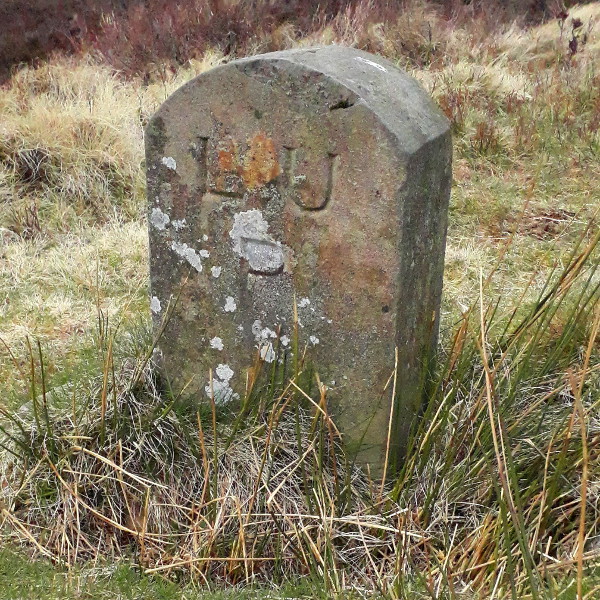
On top is a simple cross, and on the other side, other letters.
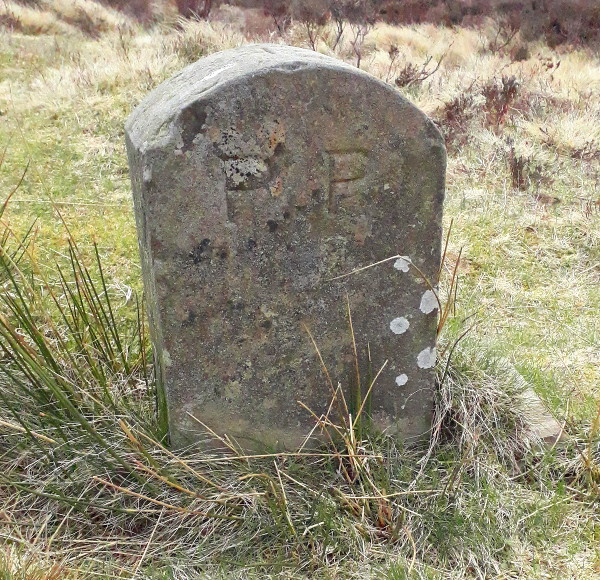
This is a boundary between parishes, rather than mineral owners, hence I suspect rather less money was spent on it. Llanfrechfa Upper Parish, on the one side; Pontypool Parish, on the other.
Finally, we reached the summit. Being a plateau, there wasn’t a dramatic view, just gently shelving moorland. In the distance, the Severn shined silver, down by the wetlands and the mouth of the Usk. England faded away into mist. The big difference—the sign we had reached the summit—was the strength of the unobstructed wind blowing across the mountain.
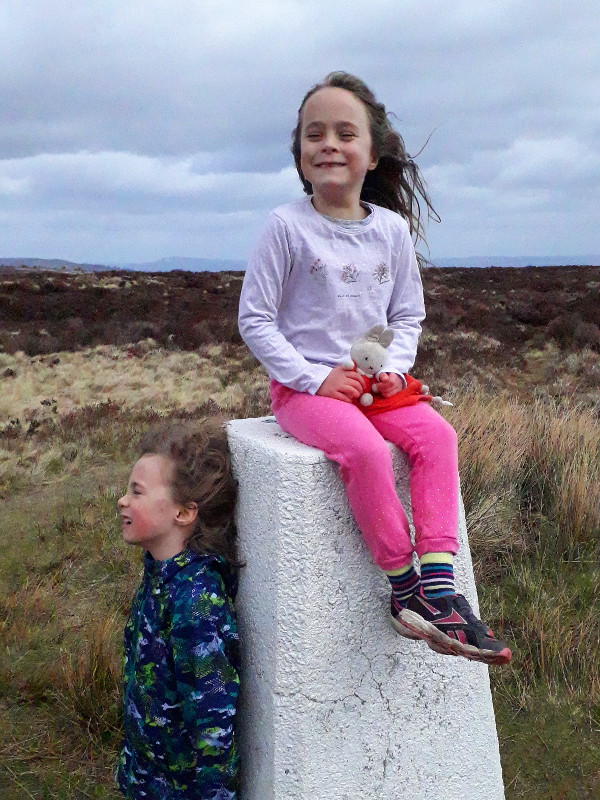
“I’m freezing!” said The Child Who Likes Fairies.
“Maybe next time we go up a mountain,” I said, “you’ll wear more layers of clothes like I said you should.”
“I’m never going up a mountain ever again,” she replied. “Ever.”
“What if next time we want to go in the mountains,” I offered, “we find a train that goes near some mountains and look at them out of the window?”
“As long as it takes us back down the mountain again once we’re at the top,” she said. And that, I think, is probably a fair bargain.

 Home
Home